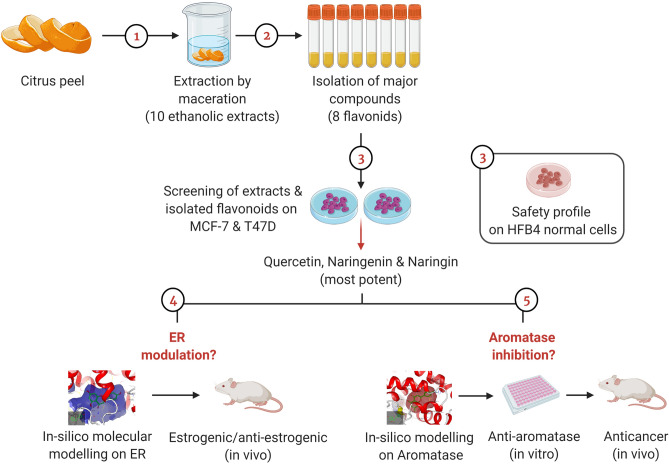Figure 6.
Schematic diagram outlining the sequential steps adopted in the present study. Extraction by maceration was performed for different varieties of different citrus peels. The ethanolic extracts alongside eight isolated flavonoids were screened against estrogen-dependent breast cancer cell lines (MCF-7 and T47D) as well as HFB4 normal cells for evaluating the safety profile. Naringenin, naringin and quercetin were found to be the most potent and were thus selected for further assays. The experiments performed had two arms which aimed at investigating estrogen receptor (ER) modulation and aromatase inhibition potential of the three most potent compounds. To achieve this aim, molecular docking against ER was performed followed by in vivo estrogenic and anti-estrogenic assays for the isolates. Moreover, molecular docking against aromatase enzyme was performed for the three compounds followed by in vitro aromatase inhibition. Then, investigation of the in vivo anticancer activity was executed along with estimating aromatase levels in solid tumors. This figure was created using BioRender software (www.biorender.com).

